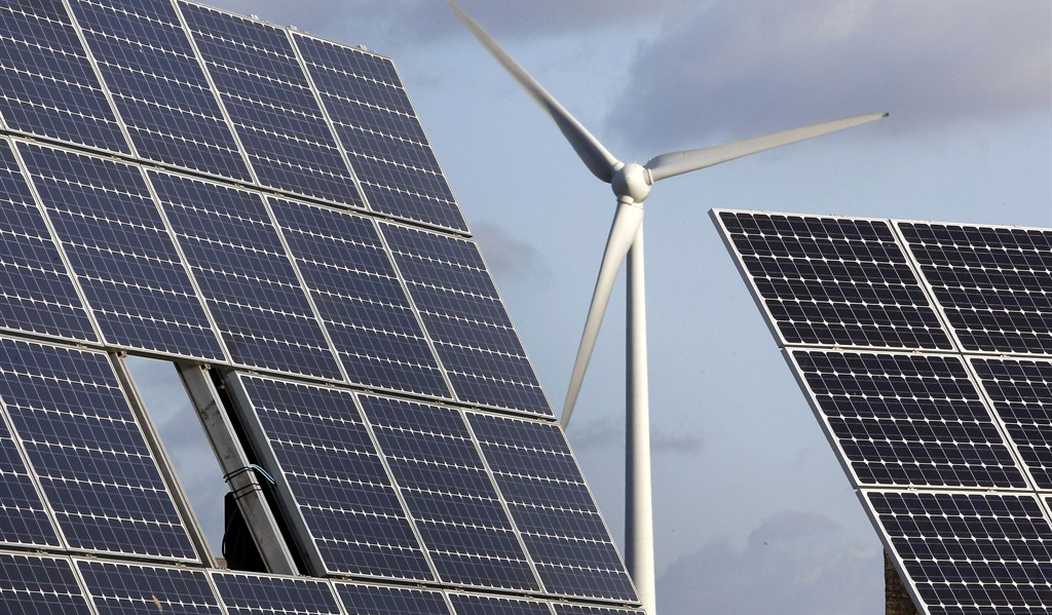We've all seen them: Hundreds of acres taken up by huge wind-power mills, huge, ugly apparitions towering over the landscape. We've all seen the big fields of solar power farms taking up land that could otherwise have gone to other purposes - or just been left alone. A lot of country that I roamed looking for pheasants and partridge in my youth, land in central Iowa, some of the best farmland in the world, now has hundreds of these big, ugly mills screwing up the countryside.
Too many of the same green energy advocates who shout about the need to put these boondoggles in place are also shouting about the environment, even though most of them don't live out in the environment. You know, what we used to call "the country." But some self-professed environmentalists are starting to talk about this conflict in visions, and while they may not have made the full journey yet, they are beginning to see the seeming contradiction. One such person is an Australian, Kelly Jones, who is the Creative Director for a company called Carbon8. In a recent post on LinkedIn, she presented an interesting discussion of this cognitive dissonance on the part of the climate scolds.
Renewable energy projects are a double-edged sword. Large-scale solar farms, wind turbines, and associated infrastructure are touted as solutions to the climate crisis, but their development comes at the cost of native forests and critical habitats. Vulnerable species like koalas are being pushed to extinction, yet conservation charities, aware of these impacts, find themselves in a compromising position: challenge the renewable energy narrative and risk losing funding, or remain silent and perpetuate the destruction.
So, guess what they do?
Corporate influence further complicates the issue. Renewable energy companies, eager to greenwash their operations, channel significant donations into conservation initiatives. These partnerships create a façade of environmental responsibility while insulating companies from criticism. Conservation organisations, incentivised by these donations, turn a blind eye to the damage caused. In the race for renewable dominance, profit-driven alliances have reduced Australia’s biodiversity to collateral damage.
In other words: Graft. The "renewable" energy companies donate heavily to environmental groups, essentially paying them to look the other way while the energy concerns eat up more and more habitat. But then, most of the "green" energy schemes (or, for that matter, the left in general) haven't made even a nodding acquaintance with reality.
See Also: Vegan Activist Steals Sheep, Nearly Kills It With Incompetence
Remember when I pointed out the "seeming" contradiction between green energy and environmental considerations? Here's the thing: Contradictions don't exist, not in any matter where facts are being discussed. One or the other of the premises is wrong. In this case, the wrong premise is that Australia can meet all of its energy demands with renewables, at least, not without destroying a lot of habitat. Nor, for that matter, can the United States.
The problem is that there is a lot of money to be made on these schemes.
Here's the onion:
The erosion of public trust is a particularly stark betrayal. Australians contribute to conservation charities believing their donations will safeguard wildlife and ecosystems. Instead, those funds often bolster partnerships with industries that undermine conservation goals. Government funding and corporate donations have transformed many conservation groups from independent advocates into silent enablers of habitat destruction.
Not just corporate donations, mind you, but government funding and corporate donations. There's the elephant in the room. Markets alone can't make these green schemes happen because markets alone won't support low-energy-density methods like this, except in certain unusual circumstances. Example: A homeowner in Arizona may be able to make good use of solar panels on their roof in a sunny, dry climate, where a homeowner in Maine would have much less luck. But this should be the homeowner's decision. It's not the government's place to pick winners and losers. But it is in large part government funding that pushes these projects, and without that funding, the habitat loss due to massive wind and solar farms wouldn't be happening.
I understand the environmental concerns. I should, I'm one of those people who lives out in the environment, and I like it to be clean and natural. But this is a battle we've largely won. Here in the United States, our air, water, and lands are cleaner than they have been since before the Industrial Revolution. But winning that battle won't count for much if we cover that clean, clear landscape with windmills and solar panels.
Kelly Jones is aware of the contradiction, and she's communicating that concern to people who, to be honest, won't be reading these words. And while she is certainly still on the side of the climate scolds, she is one step closer to the real world than most of them.















